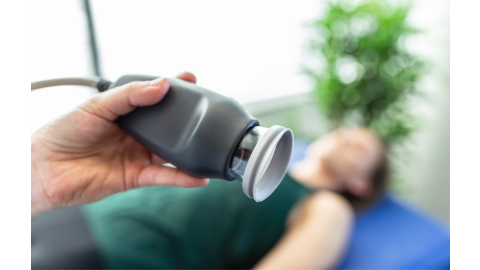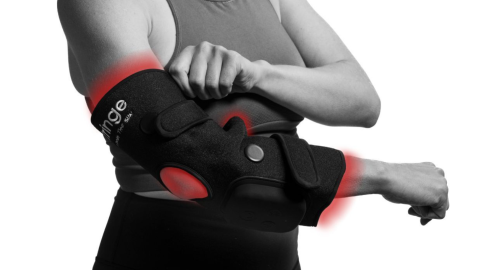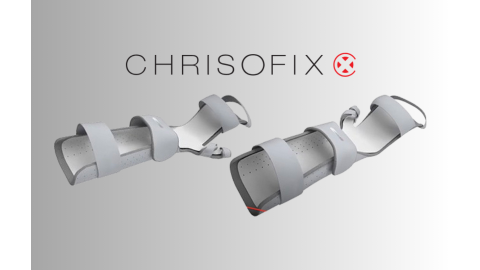There are over 1,000,000 high school football athletes in the USA. There are another 74,000 NCAA college football athletes.1 Even with advances in sports equipment, safety training, and exercise best practices, there are still going to be injuries...a lot of them. Here’s everything you need to know about the frequency and severity of injuries, plus treatment and prevention methods for each one.
How frequent are football injuries?
Football is the sport with the highest injury rate for athletes. At the high school level, a football player is injured 3.7 times per 1,000 exposures.2 An exposure is any appearance in a practice, game, scrimmage, or other organized team activity. This means there are approximately 624,000 football-related injuries among high school players each year.
In college, football is even more dangerous and remains the most injury-prone sport. Players are injured 8.1 times per 1,000 exposures.2 As the best athletes are funneled into the collegiate level, the game they play becomes more demanding and presents an even higher risk.
When do football injuries occur?
Walkthroughs and practices have the lowest injury rates, while scrimmages and competitions present much higher risks of injury. Coaches control the drills and exercises done during practice, making them a relatively safe environment. However, in the chaotic environment of a real game, injuries are five to six times more likely to occur. In live game situations, players are putting their bodies on the line every play.
For high school players, injuries often occur at specific times during practices and games. In practice, 60% of injuries happen between hours one and two. In games, 84% of injuries occur in the final three quarters. As players push their bodies more and fatigue sets in, football becomes an increasingly dangerous sport.3
What are the most common football injuries?
The distributions of different types of injuries are very similar from the high school game compared to the collegiate game. The study of collegiate injuries only showed a major difference in head and face injuries.
It’s important to note that the high school study was conducted five years later. This means that the collegiate study features results from a time when concussion diagnosis techniques were far more primitive. When accounting for this, there’s little evidence to support that different body parts are more susceptible at different levels of play.
| |||||||||||||||||||||||||||||||

How to Prevent Football Injuries
There’s no guaranteed way to prevent injuries, but there are smart steps every athlete, parent, coach, and athletic professional should take. Some easy changes in practice routines and safety measures can go a long way in creating a safer playing environment.
Start from the Beginning
The offseason is a great time to kick off safe play. Make sure players are staying conditioned throughout the offseason and especially in the months leading up to the first practices. Preseason health and wellness evaluations can set a baseline of player health for the season as well as determine what aspects of strength and conditioning a player needs to improve.
Avoid Dehydration and Heat Exhaustion
Fostering a safe environment starts with knowing when to play. In recent years, there have been a number of fatal incidents of heat stroke due to players being overworked in dangerous conditions. Give your players ample opportunities to hydrate and take frequent breaks on hot and humid days.
Warm Up Properly
Players should be stretching before and after every practice. Proper warm-up and cool-down routines can help prevent cramping and soft tissue injuries.4 Athletic Trainers and Strength and Conditioning Coaches should always advise players and coaches on stretches and routines that help prime the body for a hard practice as well as exercises that help the body cool down after practice.
Teach Safe Play
Proper play technique is crucial to safety as well. For example, when making a tackle, football players should have their heads up; teach players to never tackle with the crown of their helmet making initial contact with another player. This simple change helps reduce the risk of neck injuries and concussions. Players also need to have equipment that fits correctly, including a helmet, mouthguard, shoulder pads, and pants.
Treatment Options
Every injury and player is unique but there are a number of general tips for treating injuries. These can range from pain relief techniques to using braces and splints.
Concussion Treatment
Make sure anyone who has been or may have a concussion has seen a doctor and is getting plenty of rest. In general, an increase in sleep and relaxation time for individuals suffering from a concussion is normal and healthy. Then, gradually integrate more complex activities in physical and cognitive domains into the patient’s daily routine. Recovering from any head injury is a slow process that requires attentiveness and care.
Wound Care
For cuts and lacerations, immediate addressing of open wounds and cuts is one of the first steps to treating an injury. After cleaning the wound, apply gauze directly to the site of the injury, and then secure the gauze in place with a wrap or bandage. Making sure the wound is cleaned before bandaging is important for preventing infections.
Ligament and Muscle Damage
Splints and braces help position the body after an injury in order to prevent pain and worsening of the injury due to excessive movement. Knee, arm, and ankle braces are commonly worn after mild strains. If a player is medically cleared to resume play, a brace can be worn to help support a weakened ligament. Firmer braces provide better stability, but players often experience a more limited range of motion.
Dealing with Pain
Football players are no strangers to pain and swelling. As the athletes most susceptible to injuries, bruises and sore muscles are common. But, this doesn’t mean players should just grit their teeth. Apply an ice pack to the site of the bruise shortly afterward to reduce swelling. Then, as swelling subsides, heat therapy can ease sore muscles and bruises. Topical pain relievers are another great choice and a safer alternative to oral pain relievers.
Exercises for Recovery
Each injury has a nearly unlimited amount of exercises that can be effective in rebuilding strength during rehabilitation. Here are a few starters for ACL injuries, sprained ankles, and shoulder injuries.
Thera-Band Mini Ball Squat of ACL Injuries - Early Stages of Recovery
- Stand with the TheraBand Mini Ball firmly between your knees.
- Lower the trunk of your body with a straight back and bent knees.
- Hold with the knees bent and then slowly return to the starting position.
TheraBand Walk for ACL Injuries - Late Stages of Recovery

- While standing, wrap a TheraBand CLX around your legs, just above the knees.
- Place your knees shoulder-width apart so the band is tight.
- Slowly walk forward, adding in small hops and jumps.
Toe Flexion for Ankle Sprains

- From a sitting position with your legs extended, place a TheraBand Resistance Band on the bottom of your foot while holding the slack from the toes and heel.
- Flex your toes away from you and into the band.
- Hold this position for a moment then slowly return to the starting position.
Thera-Band Shoulder Internal Rotations for Shoulder Injuries
- Using a TheraBand CLX Wall Station, hold the end of the band in your hand with your elbow at the hip and the hand out in front.
- Keeping the forearm parallel to the ground bring your hand toward the abdomen, rotating at the elbow.
- Hold this position for a moment and then slowly return to the starting position.
These exercises and techniques are just a start on the road to recovery. There is a limitless amount of tools and tips for helping football players get back into the game. For more information and exercise options, check out all Performance Health Academy has to offer.
References
Football: Probability of competing beyond high school. (2019, April 09). Retrieved May 16, 2019, from https://on.ncaa.com/2WlWaXb
Comstock, D. R., Ph.D., Currie, D. W., MPH, & Pierpoint, L. A., MS. (2014). NATIONAL HIGH SCHOOL SPORTS-RELATED INJURY SURVEILLANCE STUDY [Scholarly project]. In University of Colorado Denver. Retrieved from https://bit.ly/2OIck6y
Kerr, Z. Y., Simon, J. E., Grooms, D. R., Roos, K. G., Cohen, R. P., & Dompier, T. P. (2016, September 01). Epidemiology of Football Injuries in the National Collegiate Athletic Association, 2004-2005 to 2008-2009. Retrieved from https://bit.ly/2WYEOg5
Common Sports Injuries and Sports Injury Prevention Tips | UW Orthopaedics and Sports Medicine, Seattle. (n.d.). Retrieved from https://bit.ly/2WhWmH6
Medical Disclaimer: The information provided on this site, including text, graphics, images, and other material, are for informational purposes only and are not intended to substitute for professional medical advice, diagnosis or treatment. Always seek the advice of your physician or other healthcare professional with any questions or concerns you may have regarding your condition.








 France
France Australia
Australia







